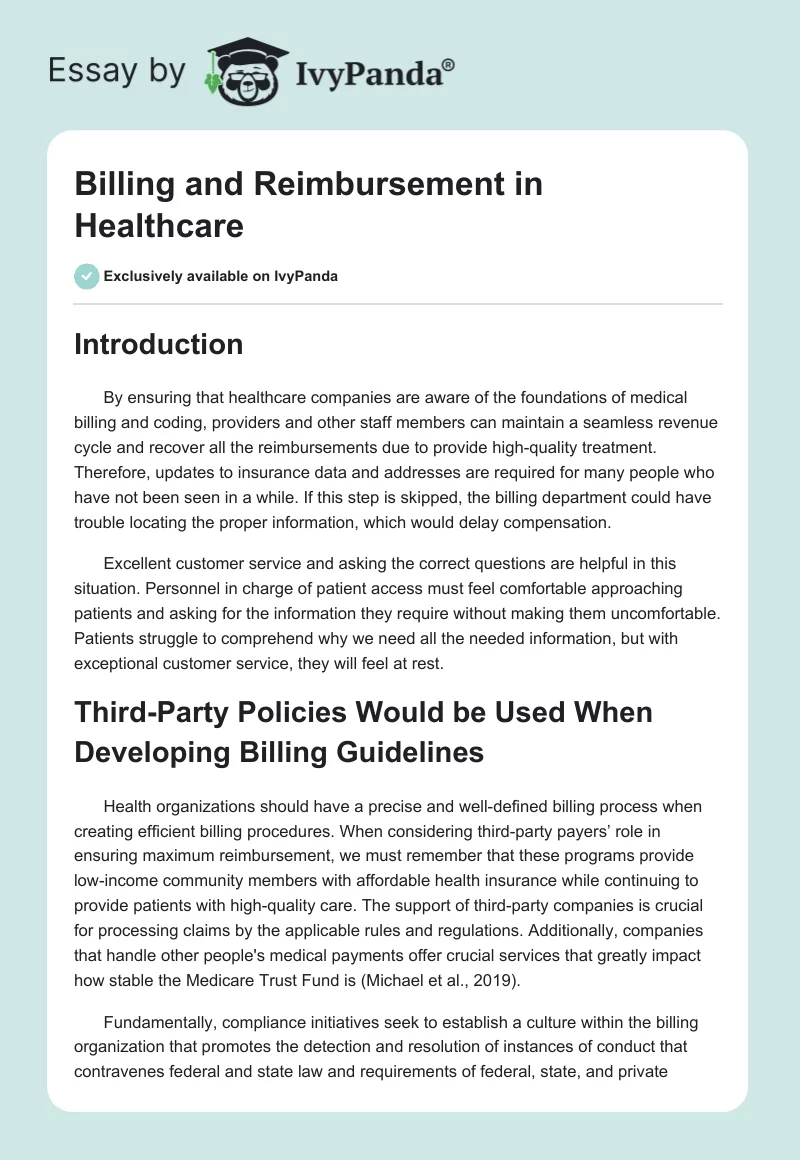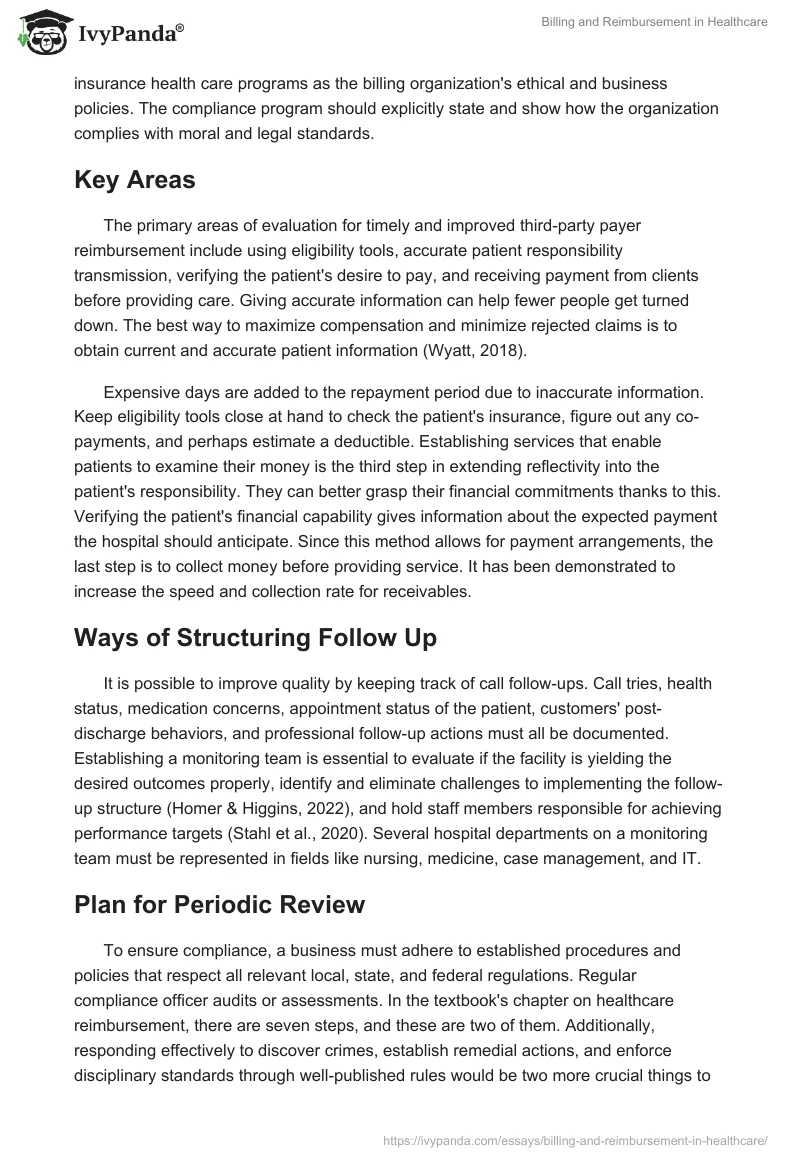Introduction
By ensuring that healthcare companies are aware of the foundations of medical billing and coding, providers and other staff members can maintain a seamless revenue cycle and recover all the reimbursements due to provide high-quality treatment. Therefore, updates to insurance data and addresses are required for many people who have not been seen in a while. If this step is skipped, the billing department could have trouble locating the proper information, which would delay compensation.
Excellent customer service and asking the correct questions are helpful in this situation. Personnel in charge of patient access must feel comfortable approaching patients and asking for the information they require without making them uncomfortable. Patients struggle to comprehend why we need all the needed information, but with exceptional customer service, they will feel at rest.
Third-Party Policies Would be Used When Developing Billing Guidelines
Health organizations should have a precise and well-defined billing process when creating efficient billing procedures. When considering third-party payers’ role in ensuring maximum reimbursement, we must remember that these programs provide low-income community members with affordable health insurance while continuing to provide patients with high-quality care. The support of third-party companies is crucial for processing claims by the applicable rules and regulations. Additionally, companies that handle other people’s medical payments offer crucial services that greatly impact how stable the Medicare Trust Fund is (Michael et al., 2019).
Fundamentally, compliance initiatives seek to establish a culture within the billing organization that promotes the detection and resolution of instances of conduct that contravenes federal and state law and requirements of federal, state, and private insurance health care programs as the billing organization’s ethical and business policies. The compliance program should explicitly state and show how the organization complies with moral and legal standards.
Key Areas
The primary areas of evaluation for timely and improved third-party payer reimbursement include using eligibility tools, accurate patient responsibility transmission, verifying the patient’s desire to pay, and receiving payment from clients before providing care. Giving accurate information can help fewer people get turned down. The best way to maximize compensation and minimize rejected claims is to obtain current and accurate patient information (Wyatt, 2018).
Expensive days are added to the repayment period due to inaccurate information. Keep eligibility tools close at hand to check the patient’s insurance, figure out any co-payments, and perhaps estimate a deductible. Establishing services that enable patients to examine their money is the third step in extending reflectivity into the patient’s responsibility. They can better grasp their financial commitments thanks to this. Verifying the patient’s financial capability gives information about the expected payment the hospital should anticipate. Since this method allows for payment arrangements, the last step is to collect money before providing service. It has been demonstrated to increase the speed and collection rate for receivables.
Ways of Structuring Follow Up
It is possible to improve quality by keeping track of call follow-ups. Call tries, health status, medication concerns, appointment status of the patient, customers’ post-discharge behaviors, and professional follow-up actions must all be documented. Establishing a monitoring team is essential to evaluate if the facility is yielding the desired outcomes properly, identify and eliminate challenges to implementing the follow-up structure (Homer & Higgins, 2022), and hold staff members responsible for achieving performance targets (Stahl et al., 2020). Several hospital departments on a monitoring team must be represented in fields like nursing, medicine, case management, and IT.
Plan for Periodic Review
To ensure compliance, a business must adhere to established procedures and policies that respect all relevant local, state, and federal regulations. Regular compliance officer audits or assessments. In the textbook’s chapter on healthcare reimbursement, there are seven steps, and these are two of them. Additionally, responding effectively to discover crimes, establish remedial actions, and enforce disciplinary standards through well-published rules would be two more crucial things to do to maintain compliance (Homer & Higgins, 2022). A sound compliance strategy is essential for eliminating erroneous claims, lowering the possibility of billing audits, and avoiding moral ambiguities. A successful compliance program must include these seven crucial elements, according to the 2010 Federal Sentencing Guidelines Manual (Homer & Higgins, 2022).
The seven essential components include putting written policies, procedures, and conduct guidelines in place and establishing a compliance committee and compliance officer to give. Program management. Executing authority delegation with care. Training staff members and creating efficient communication channels. Else, carrying out internal audits and monitoring and imposing standards through widely known disciplinary procedures, responding immediately to crimes discovered, and taking appropriate action.
Marketing Reimbursement
New Managed Care Contracts Impact on Reimbursement
A managed care contract is crucial to a hospital’s financial health because, when done well, it may represent a substantial portion of its earnings (Baqui et al., 2020). When healthcare contracts are appropriately established, new health insurance products may lead to a larger cash flow on the payer side. Additionally, because provider networks may deliver better and more coordinated treatment, managed care contracts can result in higher patient involvement and satisfaction. The field of managed care places a strong emphasis on measures for quality improvement, Preventative measures that motivate participants to care for themselves more effectively and participate in recommended screenings.
Resources Needed to Ensure Billing and Coding Compliance
Resources would be needed to guarantee compliance in the coding and billing divisions, such as internal audits and suitable training for medical workers and other staff members. Make sure errors are corrected before submitting claims, as failure may create delays, increased expenses from upcoding, and even rejections. Failure to conduct audits may result in financial loss as well. A US law known as HIPPA, or the Health Insurance Portability and Accountability Act of 1996 (Krzyzanowski & Manson, 2022), guarantees data privacy and security and includes obligations to uphold the confidentiality of medical information in the future.
HIPPA requires healthcare organizations to use the same coding guidelines or risk losing funds (Krzyzanowski & Manson, 2022). It is critical that healthcare companies, especially those involved in billing and coding, base their opinions on ethics to avoid penalties and not receiving payment for their patient’s care. Since there is zero tolerance for error in invoicing and coding, they must completely abide by the laws or risk receiving heavy fines.
Strategy Evaluation to Ensure Ethics
The Patient Protection and Affordable Care Act requires that all patients be informed that if a claim is rejected, they are entitled to an internal review by the insurer and one with an impartial review board. Following the proper procedure is essential because the health bill more significantly funds state-board consumer help programs with a budget to assist consumers in their fight against rejections and false charges.
Conclusion
One of the most significant laws is HIPAA because it protects patients’ rights to dignity. Compliance officers oversee and train personnel on the rules and regulations that stop fraud and abuse, from patient privacy to coding and accounting. Regular audits of care providers would guarantee that patients receive proper treatment and that fraud is not occurring. In conclusion, to complete their reimbursement participation, healthcare institutions largely rely on various departments and special roles inside those departments. Everyone has a role to play in providing the greatest care and making reimbursement processes as simple as feasible.
References
Baqui, P., Bica, I., Marra, V., Ercole, A., & van Der Schaar, M. (2020). Ethnic and regional variations in hospital mortality from COVID-19 in Brazil: A cross-sectional observational study. The Lancet Global Health, 8(8), e1018-e1026. Web.
Homer, E. M., & Higgins, G. E. (2022). An examination of blameworthiness on the federal sentencing of organizations to implement corporate compliance programs. The Social Science Journal, 59(2), 283–296. Web.
Krzyzanowski, B., & Manson, S. M. (2022). Twenty years of the health insurance portability and accountability act safe harbor provision: Unsolved challenges and ways forward. JMIR Medical Informatics, 10(8), e37756. Web.
Michael, K., Kobran, S., Abbas, R., & Hamdoun, S. (2019). Privacy, data rights, and cybersecurity: Technology for good in achieving sustainable development goals. In 2019 IEEE International Symposium on Technology and Society (ISTAS) (pp. 1–13). IEEE. Web.
Stahl, G. K., Brewster, C. J., Collings, D. G., & Harjo, A. (2020). Enhancing the role of human resource management in corporate sustainability and social responsibility: A multi-stakeholder, multidimensional approach to HRM. Human Resource Management Review, 30(3). Web.
Wyatt, J. C. (2018). How can clinicians, specialty societies, and others evaluate and improve the quality of apps for patient use?BMC medicine, 16(1), 1–10. Web.


